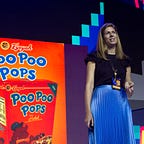Collaging for Design, Visual & Digital Literacy
The process of making a collage is known to nurture fine motor skills and creativity but it’s potential extends way beyond that. Collage can be used to explore a complex multi-faceted problem area such as the dangers of the Internet.
The process outlined below introduces students to a methodology of creative problem solving that mirros the design thinking process, enabling them to practise important future skills whilst having fun.
Part 1: Introduction to topic and Inspiration through Art
Students are introduced to a collection of perspectives about the benefits and dangers of the Internet through images created by professional designers and illustrators. This leads to vibrant conversations about our relationship with devices, as multiple points of view and perspectives are shared.
Skills practised: verbal communication, debating, empathy, making connections between ideas.
Part 2: How might we create a collage about the dangers of the Internet?Students are presented with a blank canvas and a wide collection of magazines and newspapers, ranging from specialist fashion & IT magazines to newspapers. They need to consider possibilities and begin to focus on an idea, as well as consider the role of images in communicating that idea.
Skills practised: defining a problem, divergent & convergent thinking, visual literacy, ideation.
Part 3: Collage Creation
The energy in the classroom is palpable as students begin to experiment. For many as this is an activity they are not use to, the process of getting messy and experimenting takes time, but once they cross the barrier of discomfort and begin to experiment, the freedom and happiness that comes with creativity takes over.
Skills practised: prototyping, testing, iterating, growth mindset
Part 4: Sharing and Reflection
Sharing their collage with their peers enables students to learn from each other and test their prototype — how well does the collage communicate their idea, how did fellow students communicate the same idea, what feelings does a collages evoke, what are the possibilities and limitations of the medium. Inviting professionals to comment on the work and share further ideas and examples of professional collage artists connects the students to the creative and communication industry.
Skills practised: testing, communication, self-reflection
Here is the impressive collage collection created by Grade 5 (age 10–11) students from United World College South East Asia.
